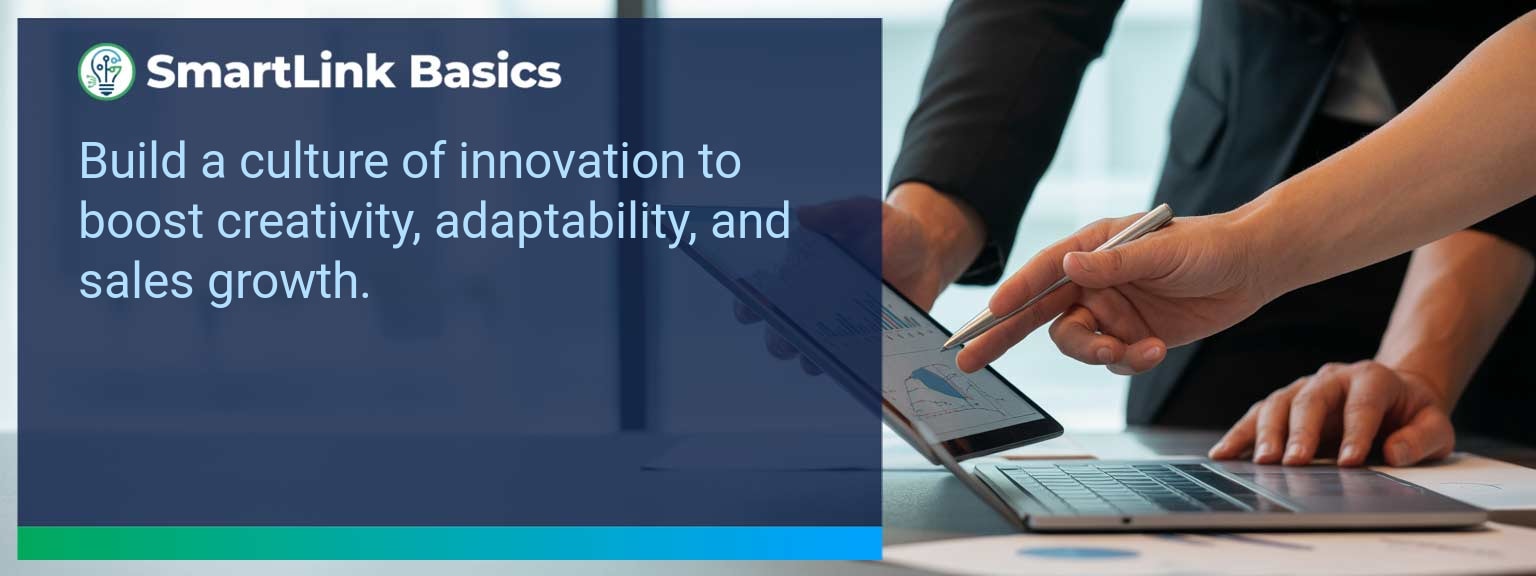A team’s greatest advantage is not found in its technology stack but in the collective capability of its people. At SmartLink Basics, we’ve seen that leaders who develop first—prioritizing talent development before anything else—set a higher trajectory for sales performance. This approach works because it aligns skill growth, accountability, and collaboration into a single operating rhythm.
In this article, you’ll learn how to design peer coaching systems, track early signs of disengagement, combine growth culture with firm accountability, and apply technology to sustain momentum. You’ll leave with a framework for building a sales team that supports each other, adapts quickly, and consistently outperforms expectations.
- Prioritize talent development before performance pressure.
- Use structured peer coaching to accelerate skills transfer.
- Spot disengagement early through collaboration metrics and feedback.
- Balance growth culture with decisive accountability actions.
- Leverage sales technology to scale enablement and tracking.
Develop First: Building a Collaborative Growth Culture
Equipping your sales team for success starts with intentional, structured development. Shared learning environments create higher retention of skills than top-down training alone. Leaders can build this culture with tools such as CRM optimization, workflow integration, and performance analytics to make peer coaching trackable and effective.
For example, scheduling monthly “skill share” sessions on objection handling or product demos encourages direct peer-to-peer transfer of expertise. When paired with shared accountability pods reviewing real deals, you move from isolated performance to collective improvement. This approach drives consistency in revenue operations and reinforces that mastery leads to career progression.
Building culture this way makes it easier to embed operational processes and sales automation, so knowledge gains are replicated across the team.
Recognizing Disengagement Early
Even with a strong development program, disengagement can erode team performance if left unchecked. Signs include decreased meeting participation, declining collaboration scores in your CRM, and recurring negative peer feedback. Performance analytics can highlight these patterns before they impact revenue.
An example: A manager kept a long-time rep for fear of losing clients due to deep-rooted relationships, yet their toxic behavior lowered morale. The damage to trust outweighed the perceived client risk.
Detecting these early lets you decide—redevelop, reassign, or release—while minimizing disruption to core accounts.
Leveraging Growth and Accountability
Talent development only delivers lasting results when balanced with leadership accountability. Setting high expectations without enforcing them creates inconsistency. Leaders must act decisively when a team member misaligns with evolving strategies, whether that requires targeted coaching or a role change.
Technology tools like deal review analytics, call scoring systems, and integrated goal tracking make it transparent when standards are or aren’t met. Enforcing these standards reinforces the value of development investments and ensures fairness across the team.
Transforming Performance Through Team Alignment
When teams transition from solo performers to interdependent contributors, performance accelerates. A development-first approach—supported by CRM optimization and automated workflow alerts—ensures no skill gaps go unaddressed. Growth paths stay visible, and accountability measures remain consistent across all roles.
Leaders who master this balance see communication quality rise, reduced friction in handoffs, and a clear lift in both win rates and customer satisfaction.
Scaling Development with Technology
Once a development-first culture is established, sales automation and AI-powered coaching tools enable scalability. Workflow integration ensures new hires plug into the same peer coaching and feedback systems from day one. Dashboards in your CRM can track peer coaching frequency, skill application, and resulting performance trends.
Use automated nudges to prompt skill-sharing sessions, integrate call analytics to measure improvement, and apply performance analytics to continuously refine your enablement strategy. This keeps growth consistent even as the organization expands.
| Category | Metric | Definition | Target |
|---|---|---|---|
| Leading | Peer Coaching Sessions Completed | Number of skill-sharing or coaching sessions completed per rep per quarter | 4+ |
| Leading | Collaboration Score in CRM | Average peer feedback and internal engagement rating | 8/10+ |
| Lagging | Revenue Growth per Rep | Increase in closed-won value per quarter per rep | +15% |
| Lagging | Customer Retention Rate | Percentage of accounts retained over a 12-month period | 90%+ |
| Quality | Skill Application Audit | Qualitative review of rep ability to apply new skills in calls and demos | 80% adoption |
| Quality | Alignment Score | Teamwide survey score measuring clarity on goals and process alignment | 85%+ |
Get the 90-day plan, coaching rubric, and dashboard template to operationalize AI in your enablement program.

The Payoff of a Development-First Sales Leadership Approach
A develop first mindset aligns skill building, accountability, and technology, creating a self-sustaining culture of performance. Leaders who build this balance see stronger collaboration, faster onboarding, and higher win rates. Talent growth and decisive action are two sides of the same coin—when combined, they maintain momentum and safeguard team health.
Get more Sales Leadership insights from SmartLink Basics and start operationalizing these strategies in your own team today.








